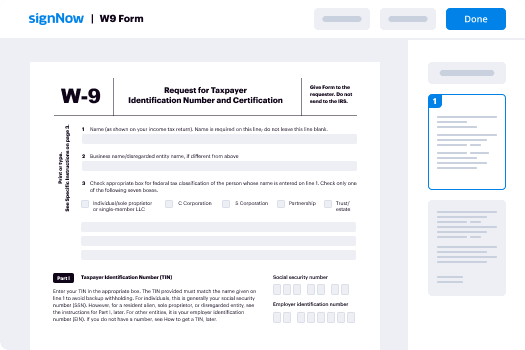© 2016 - U.S. Legal Forms, Inc
USLegal Guide to How
to Relinquish Custody
I NTRODUCTION
Parents do not cease to
be parents when there is
a divorce or separation
between them. The
ongoing obligations of a
parent to provide for the
emotional and physical
well-being of a child
only ends with the
emancipation of the
child, the death of a
parent or child, or the
formal termination of
parental rights.
Termination of parental
rights is a court order
that severs the rights,
powers, privileges,
immunities, duties and
obligations between a
parent and child. A
termination of parental
rights may be voluntary
or involuntary. Even if
the statutory grounds for
termination of parental
rights are established,
the court need not
terminate parental rights
if such action is not in
the child’s best interests.
The parents, either
parent, or a surviving
parent who desires to
relinquish parental rights to any natural or adopted
child and make the child
available for adoption or
re-adoption, may
petition the family court
in the county in which
they, he, she, or the
child resides or was
born, for an order
terminating parental
rights.
The petition must be in
the format followed by
the court in that area.
The petition may often
be filed during the
mother's pregnancy,
however, the judgment
terminating parental
rights will usually not be
issued until after the
birth of the child; the
petitioner or petitioners
have filed a written
reaffirmation of their
desires as expressed in
the petition, and the
petitioner or petitioners
have been given notice
of a proposal for the
entry of judgment and
an opportunity to be
heard in connection with
the proposal.
R EASONS FOR
T ERMINATING P ARENTAL
R IGHTS
Biological fathers might
choose to give up
(relinquish) parental
rights for a number of
reasons. For example, if
a couple decides to place
a baby for adoption, a court will first need to
terminate the parental
rights of both biological
parents before an
adoption can be
finalized. If a woman
remarries and wants her
husband to adopt her
child, the biological
father might chose to
relinquish his parental
rights. Some fathers
choose not to be active
in a parental role. By
giving up parental
rights, they can be
relieved of the duty of
child support for the
children. However, a
court will not grant a
relinquishment when it
is solely to avoid child
support obligations. In
some cases, a father
might continue to be
held responsible for
financially supporting
his biological child even
after he gives up his
paternal rights. For
example, if the mother
must seek governmental
assistance in order to
support the child, a
judge has the authority
to terminate parental
rights, but can still
require the father to pay
child support until the
child reaches adulthood.
This results in the father
still being financially
responsible for the child
without having any
visitation rights or say in
how the child is raised.
T IME P ERIOD FOR
T ERMINATING P ARENTAL
R IGHTS
The time frame for
giving up parental rights
varies. If a father signs a
document stating his
desire to terminate his
parental rights, then the
time frame depends on
whenever he can get a
court date before a
judge. In the case of
giving up parental rights
by default through a
putative father registry,
the state generally
specifies how much time
the father has to assert
his parental rights after
the baby is born. If the
father fails to act, a
judge will terminate his
parental rights after the
specified time period has
elapsed.
D UE P ROCESS R IGHTS IN
T ERMINATION OF
P ARENTAL R IGHTS
H EARINGS Because termination of
parental rights
proceedings affect the
fundamental liberty
interest of natural
parents in the care,
custody and
management of their
children, they raise both
procedural and
substantive due process
concerns. The U.S.
Supreme Court has
identified a fundamental
privacy interest in
raising one’s children.
Besides being given
notice of the
proceedings, the parents
must also have an
opportunity to be heard.
Courts have found that a
parent who is unable to
attend the hearing must
have the right to
“meaningful
participation” in the
hearing. After reviewing
the state’s evidence, the
parent must be able to
present evidence by
deposition or by
telephone and to
challenge the state’s
evidence through
additional cross-
examination or rebuttal
testimony.
P ROVING W HY
T ERMINATION OF R IGHTS IS
P ROPER
State laws vary in the
factors used to
determine whether
parental rights should be terminated. The overall
consideration for the
court is the best interests
of the child. The
constitutional guarantee
of due process of law
requires that the
statutory grounds for
termination of parental
rights be established by
‘clear and convincing
evidence,’ not merely a
‘fair preponderance of
the evidence’.
Supporting evidence in
termination hearings is
required to substantiate
the claims and evidence
that led a case to legally
qualify for the
termination petition to
be filed. Qualified
expert witnesses may
submit testimony on the
diagnosis and prognosis
of any physical or
mental health concerns
of the parents and the
child, as well as on the
history of prior
treatment. Testimony
may be provided by
family members or other
individuals involved in
the case regarding the
behavior of the parents
toward the child.
In Texas, for example, a
court may order
termination of the
parent-child relationship
if the court finds by
clear and convincing
evidence:
1); that the parent has:
(A) voluntarily left the
child alone or in the
possession of another
not the parent and
expressed an intent not
to; return
(B) voluntarily left the
child alone or in the
possession of another
not the parent without
expressing an intent to
return, without
providing for the
adequate support of the
child, and remained
away for a period of at
least three months
(C) voluntarily left the
child alone or in the
possession of another
without providing
adequate support of the;
child and remained away
for a period of at least
six months;
(D) knowingly placed or
knowingly allowed the
child to remain in
conditions or
surroundings which
endanger the physical or
emotional well-being of
the child;
(E) engaged in conduct
or knowingly placed the
child with persons who
engaged in conduct
which endangers the;
physical or emotional
well-being of the child;
(F) failed to support the
child in accordance with
the parent's ability
during a period of one year ending within six
months of the date of the
filing of the petition;
(G) abandoned the child
without identifying the
child or furnishing
means of identification,
and the child's identity
cannot be ascertained by
the exercise of
reasonable diligence;
(H) voluntarily, and with
knowledge of the
pregnancy, abandoned
the mother of the child
beginning at a time
during her pregnancy
with the child and
continuing through the
birth, failed to provide
adequate support or
medical care for the
mother during the period
of abandonment before
the birth of the; child,
and remained apart from
the child or failed to
support the child since
the birth;
(I) contumaciously
refused to submit to a
reasonable and lawful
order of a court under
Subchapter D, Chapter
261;
(J) been the major cause
of
(i) the failure of the
child to be enrolled in
school as required by the
education Code
(ii) the child's absence
from the child's home
without the consent of
the parents or guardian
for a substantial length of time or without the
intent to return;
(K) executed before or
after the suit is filed an
unrevoked or
irrevocable affidavit of
relinquishment of
parental rights as
provided by this chapter;
(L) been convicted or
has been placed on
community supervision,
including deferred
adjudication community
supervision, for being
criminally responsible
for the death or serious
injury of a child under
the following sections of
the Penal Code or
adjudicated under Title 3
for conduct that caused
the death or serious
injury of a child and that
would constitute a
violation of one of the
following Penal Code
sections:
(i) Section 19.02
(murder)
(ii) Section 19.03
(capital murder)
; (iii) Section 19.04
(manslaughter)
; (iv) Section 21.11
(indecency with a child)
(v) Section 22.01
(assault)
(vi) Section 22.011
(sexual assault)
(vii) Section 22.02
(aggravated assault)
(viii) Section 22.021
(aggravated sexual
assault)
(ix) Section 22.04
(injury to a child, elderly
or disabled individual,
(x) Section 22.041
(abandoning or
endangering child)
(xi) Section 25.02
(prohibited sexual
conduct)
(xii) Section 43.25
(sexual performance by
a child) and;
(xiii) Section 43.26
(possession or
promotion of child
pornography)
(M) had his or her
parent-child relationship
terminated with respect
to another child based
on a finding that the
parent's conduct was in
violation of Paragraph
(D) or (E) or
substantially equivalent
provisions of the law of
another state;
(N) constructively
abandoned the child who
has been in the
permanent or temporary
managing
conservatorship of the
Department of
Protective and
Regulatory Services or
an authorized agency for
not less than six months,
and:
(i) the department or
authorized agency has
made reasonable efforts
to; return the child to the
parent; (ii) the parent has not
regularly visited or
maintained significant
contact with the child
and
(iii) the parent has
demonstrated an
inability to provide the
child with a safe
environment
(O) failed to comply
with the provisions of a
court order that
specifically established
the actions necessary for
the parent to obtain the
return of the child who
has been in the
permanent or temporary
managing
conservatorship of the
Department of
Protective and
Regulatory Services for
not less than nine
months as a result of the
child's removal from the
parent under Chapter
262 for the abuse or
neglect of the child;
(P) used a controlled
substance, as defined by
Chapter 481, Health and
Safety Code, in a
manner that endangered
the health or safety of
the child, and:
(i) failed to complete a
court-ordered substance
abuse treatment program
or
(ii) after completion of a
court-ordered substance
abuse treatment
program, continued to abuse a controlled
substance;
(Q) knowingly engaged
in criminal conduct that
has resulted in the
parent's:
(i) conviction of an
offense;; and
(ii) confinement or
imprisonment and
inability to care for the
child for not less than
two years from the date
of filing the petition;
(R) been the cause of the
child being born
addicted to alcohol or a
controlled substance,
other than a controlled
substance legally
obtained by prescription,
as defined by Section
261.001 or
(S) voluntarily delivered
the child to a designated
emergency infant care
provider under Section
262.302 without
expressing an intent to
return for the child; and
(2) that termination is in
the best interest of the
child.
S TATE I NVOLVEMENT IN
T ERMINATING P ARENTAL
R IGHTS
The Adoption and Safe
Families Act (ASFA)
requires State agencies
to file a petition to
terminate parental rights,
with certain exceptions,
when:
A child has been in
foster care for 15 of the
most recent 22 months.
A court has determined:
A child to be an
abandoned infant.
That the parent has
committed murder or
voluntary manslaughter
of another child of the
parent; aided, abetted,
attempted, conspired, or
solicited to commit such
a murder or voluntary
manslaughter; or
committed a felony
assault that has resulted
in serious bodily injury
to the child or another
child of the parent.
In response to ASFA,
many states have
adopted limits to the
maximum amount of
time a child can spend in
foster care before
termination proceedings
can be initiated.
Typically, states have
adopted the ASFA
standard of 15 out of the
most recent 22 months
in care. Some states,
however, specify shorter
time limits, particularly
for very young children.
The laws in most states
are consistent with the
other termination
grounds required under
ASFA. ASFA requires that
proceedings to terminate
parental rights be
initiated when the child
has been in foster care
for 15 of the most recent
22 months. An
exception may be made
under some
circumstances,
including:
The child has been
placed under the care of
a relative.
The state agency has
documented in the case
plan a compelling reason
to believe that
terminating the parent's
rights is not in the best
interests of the child.
The parent has not been
provided with the
services required by the
service plan for
reunification of the
parent with the child.
Approximately 20 states
and the District of
Columbia confirm these
requirements in their
statutes.
Federal regulations
provide that compelling
reasons for not filing a
petition to terminate
parental rights include:
-Adoption is not the
appropriate permanency
goal for the child; -No grounds to file a
petition to terminate
parental rights exist;
-The child is an
unaccompanied refugee
minor as defined in 45
Code of Federal
Regulations 400.111; or
-There are international
legal obligations or
compelling foreign
policy reasons that
would preclude
terminating parental
rights.
Helpful tips on setting up your ‘How To Form’ online
Are you fed up with the inconvenience of handling paperwork? Look no further than airSlate SignNow, the premier eSignature platform for individuals and small to medium-sized businesses. Bid farewell to the lengthy process of printing and scanning documents. With airSlate SignNow, you can effortlessly finalize and sign documents online. Take advantage of the powerful features built into this user-friendly and cost-effective platform to transform your document management experience. Whether you need to sign forms or gather eSignatures, airSlate SignNow simplifies the process with just a few clicks.
Follow this comprehensive guide:
- Log into your account or initiate a free trial with our service.
- Click +Create to upload a document from your device, cloud storage, or our template library.
- Open your ‘How To Form’ in the editor.
- Click Me (Fill Out Now) to prepare the document on your end.
- Add and assign fillable fields for others (if needed).
- Proceed with the Send Invite settings to request eSignatures from others.
- Download, print your version, or create a reusable template.
Don’t be concerned if you need to collaborate with your coworkers on your How To Form or send it for notarization—our solution provides everything you require to achieve such goals. Register with airSlate SignNow today and enhance your document management to a higher standard!
















